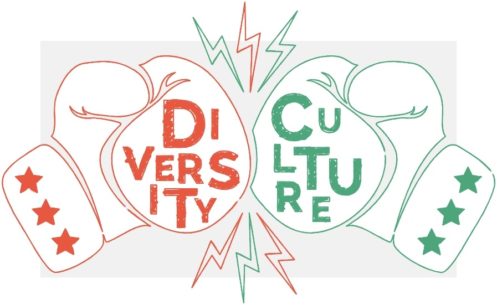INSIDE THE 
NEWS + ADVICE
Does Cultural Fit Exclude Diversity?
 It can be a bit of a recruiting paradox. Do you hire for cultural fit or do you hire for diversity? Truth be told, they do not have to be opposing practices. The challenge is to find that comfort zone between the rock and the hard place where you consider all factors and hire the best candidate, with fit and diversity being important pieces of the puzzle. All while balancing both the customer and the company.
It can be a bit of a recruiting paradox. Do you hire for cultural fit or do you hire for diversity? Truth be told, they do not have to be opposing practices. The challenge is to find that comfort zone between the rock and the hard place where you consider all factors and hire the best candidate, with fit and diversity being important pieces of the puzzle. All while balancing both the customer and the company.
Research indicates that a vibrant company culture creates an environment where employees are happier and more productive, while a diverse team will outperform. Fit brings about strong teamwork and diversity offers a fresh perspective. Bottom line – mesh the two to harness a potent power.
Diversity does not create conflict
It is a human trait to prefer being in the company of like-minded people. We all live habitually – buying our lattes at the same place, driving the same route, doing laundry on Saturday. Shaking up the norm can be disorienting. This same comfort zone exists in the workplace.
Sadly statements akin to “not the right fit” may hinder a company’s potential. There is a danger of a company reaching a forward thinking plateau when employees are too analogous. The addition of diversity can stimulate growth and innovation. We can quickly default to believing that diverse settings harbor the potential for conflict but in reality it brings depth to the workplace.
Cultural fit does not need to be focused on imagined quick connections between the new guy and current employees. Instead turn the thought process to how the candidate is aligned with the values of the company.
As alluring as recruiting for cultural fit can be, it appears the business world is stepping away from embracing this practice during the hiring process. The trend is evident in reviewing Fortune’s 2016 winners of the 50 Best Workplaces for Diversity when every company on the list averaged a 24 percent higher year-over-year revenue growth.
Culture isn’t a college reunion
While culture has been a priority for many companies, what’s lacking is the determination of what is important to their culture. Many times it is based on personality and sociability. In reality most employees want more than a new office buddy. Will current employees be frustrated by someone who doesn’t join the bowling team or someone who consistently underperforms? While it can build morale to have colleagues with similar backgrounds, what drives success isn’t shared hobbies.
With that said, diversity can be problematic to actively seek out. Diversity practices should include a candidate’s background, experience and personality, not just their physical appearance or heritage. In the recent movement of inclusion and change many companies still need to determine their definition of diversity.
Business leaders need to define parameters that are more tangible for the recruiter. Rather than focusing on multiple things that can differentiate a job seeker, instead determine one essential piece of their work values and then see if other personal characteristics fall into place.
Reviewing the definition of balance
If you want to streamline the hiring process and ensure that your workforce operates at peak performance, business leaders should recognize the benefit of balancing diversity with cultural fit. Remember that diversity doesn’t mean conflict and cultural fit isn’t a shared brew. But what is the best approach? Maybe this – when was the last time the company’s core values were reviewed?
Research indicates that less than 20% of employees have a good understanding of their company’s values, goals and direction. This is an incubator for poor performance. Everyone – leadership and employees – should be aligned with the overall mission.
Consider that if you want to hire for fit without suffering from group mentality, look at a job seekers goals compared to the responsibilities of the open position. Do they align? Does the candidate appear able to be successful while weathering a good dose of challenge? Are values in line? Without a common intent, the new hire could falter, lose direction and eventually have a negative influence on the team.
Look for candidates with shared values
During the recruitment process, be careful to consider what keeps your employees motivated, productive and engaged. Then look for a job seeker who can work effectively with those values. Is the work place a vortex of high energy? Does customer service reign supreme? Is innovation encouraged? Choose a new hire whose values mesh with your identified work environment.
Fit and diversity are vital to building your team. The biggest challenge will be determining which pieces of the puzzle best come together to keep the company on a progressive track. Defining work values is a big step forward. Becoming a value-based organization will bring efficiency to the recruitment process and open the door to many more successful new hires.
This entry was posted on Monday, July 30, 2018 10:50 am
There is a problem with the premise of this article. Diversity either is or is not a component of culture just like collaboration and team work, for example, are. So you hire to fit the culture. It follows then that if diversity is a component of culture it is no different from anything else in the ‘soup’ that is the culture. If diversity is not part of the culture, diversity will not enter into the fit equation!